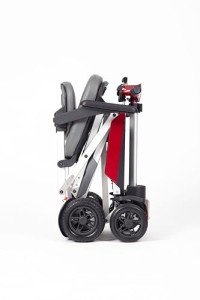10 Things You Learned In Kindergarden That Will Help You With Portable Mobility Scooters
Portable Mobility Scooters: Enhancing Freedom and Independence
As the world significantly moves towards inclusivity and accessibility, portable mobility scooters have actually become an innovative solution for people with mobility difficulties. These compact, easy-to-transport scooters are developed to empower users with the capability to navigate their environments with confidence and ease. In this blog post, we will explore the qualities, benefits, and considerations when choosing a portable mobility scooter, supported by tables and FAQs to provide a detailed introduction.
Comprehending Portable Mobility Scooters
Portable mobility scooters are lightweight, battery-operated automobiles that supply an alternative mode of transportation for those with minimal mobility. Put together utilizing resilient products, they are specifically crafted to be lightweight and compact to help with easy transportation in automobiles or on public transport.
Key Features of Portable Mobility Scooters
Feature
Description
Weight Capacity
Most scooters can support users weighing in between 250 to 500 lbs
Battery Life
Typical series of 10 to 30 miles per charge
Speed
Typically operates in between 4 to 8 mph
Turning Radius
Varies from 32 to 60 inches, making them suitable for indoor usage
Foldability
Numerous designs can be quickly folded for transportation
Wheels
Generally equipped with either strong or pneumatic tires
Portable mobility scooters are ideal for both indoor and outdoor use, supplying stability and ease of motion.
Advantages of Portable Mobility Scooters
Enhanced Freedom: Users can participate in activities that were previously difficult, such as shopping and interacting socially, therefore improving total lifestyle.
Transport Convenience: Many portable scooters can be quickly taken apart or folded, enabling users to transfer them in automobiles, vans, or public transport.
Cost-Effective: Compared to powered wheelchairs, portable scooters are frequently less costly, providing an affordable option.
User-Friendly Design: Most designs feature user-friendly controls, making them easy to operate for individuals of all ages.
Range of Options: With many brands and models on the market, potential users can choose scooters that suit their specific needs— ranging from off-road use to compact indoor options.
Important Considerations When Choosing a Portable Mobility Scooter
- Weight and Portability: Assess the weight of the scooter itself and its elements. Lighter designs are normally much easier to transfer.
- Battery Life and Range: Consider how far you require to travel on a single charge. If you prepare for long journeys, a scooter with a prolonged battery life is vital.
- Size and Dimensions: Measure where you'll save the scooter and guarantee it fits conveniently in your car or home.
- Convenience Features: Look for scooters with adjustable seats, armrests, and other ergonomic features for included comfort throughout usage.
- Terrain Compatibility: If you plan to utilize the scooter outdoors, guarantee it can manage different surfaces (e.g., gravel, turf) with ease.
Consideration
Importance
Weight & & Portability
Affects ease of transportation and storage.
Battery Life
Identifies range and liberty to check out.
Size
Essential for storage and maneuverability.
Comfort Features
Improves the general user experience.
Terrain Compatibility
Makes sure adaptability in outdoor conditions.
Often Asked Questions (FAQs)
1. How fast can a portable mobility scooter go?
Most portable mobility scooters can reach speeds in between 4 to 8 miles per hour. Nevertheless, Jay Barie might vary based upon the design and the weight of the user.
2. Do portable mobility scooters require a license or registration?
In many nations, portable mobility scooters do not need a driver's license or registration, however it's vital to check regional guidelines.
3. What is the common price series of portable mobility scooters?
Costs normally range from ₤ 600 to ₤ 3,000 or more, depending upon functions, brand name, and requirements.
4. Can portable mobility scooters be used on mass transit?
Yes, lots of public transportation systems accommodate portable mobility scooters, but it's recommended to sign in advance concerning policy information and area restrictions.
5. What are the upkeep requirements?
Regular upkeep includes battery checks, tire examinations, and keeping the scooter tidy. It's encouraged to consult the user manual for specific upkeep standards for your design.
Portable mobility scooters have ended up being a lifeline for numerous people looking for independence and mobility in their every day lives. Their benefit, ease of use, and range of readily available designs allow users to select the ideal scooter to fit their way of life.
For anyone thinking about purchasing a portable mobility scooter, it's vital to evaluate personal requirements carefully and explore numerous choices on the market. With the right option, these scooters can substantially improve mobility and assist in a more active lifestyle, ultimately resulting in enhanced health and wellbeing.
By understanding the functions and factors associated with selecting a portable mobility scooter, users can take the first action towards declaring their freedom when more. Whether for running errands, delighting in the outdoors, or simply moving the home, portable mobility scooters redefine what it means to remain active and participated in life.
